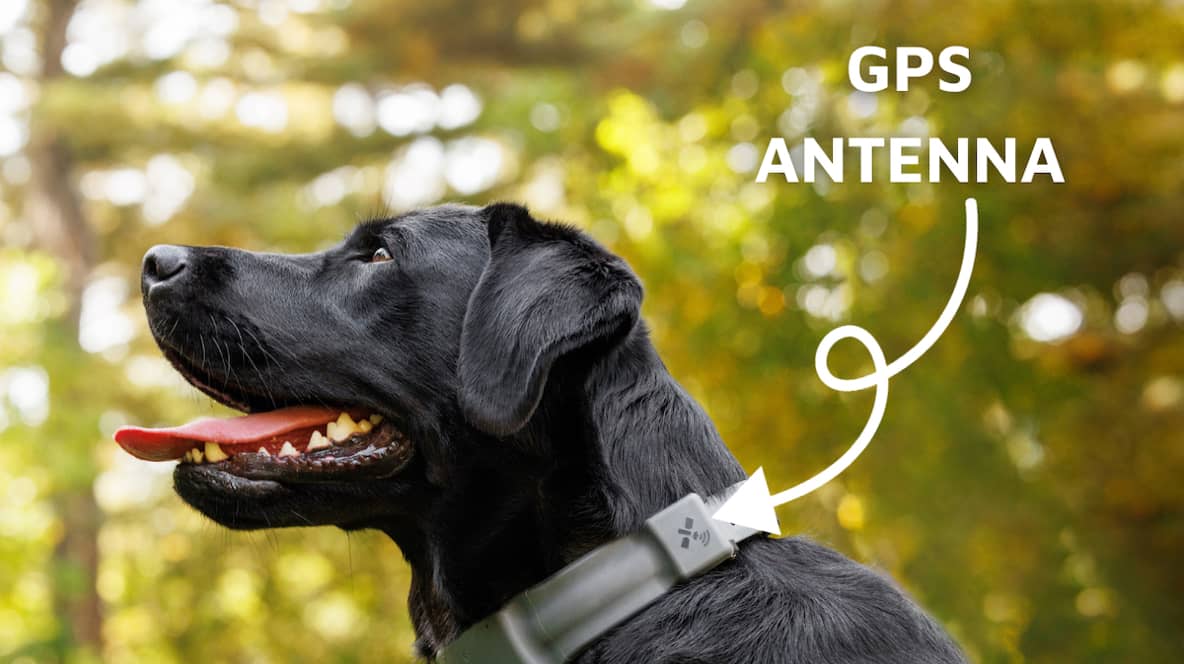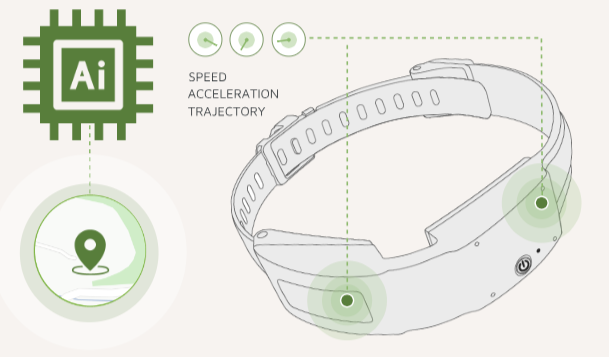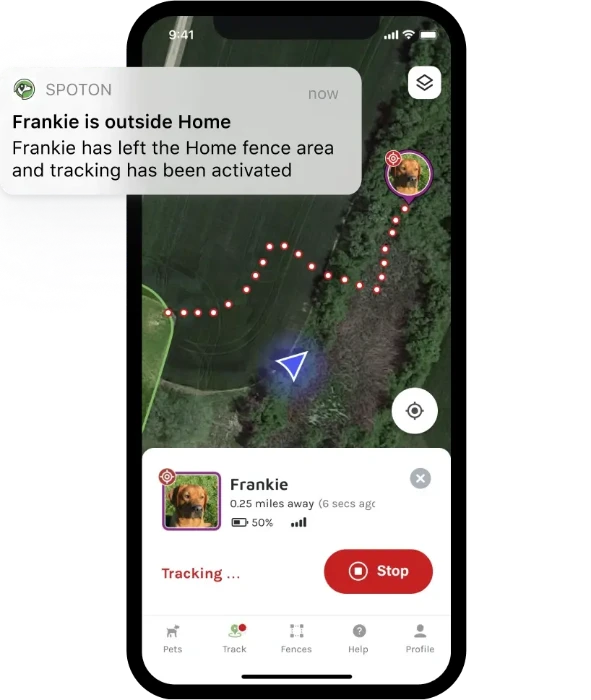
The Most Accurate GPS Dog Fence
Shop NowThe first-ever is the best ever.
We pioneered the first GPS fence back in 2019. Our goal then and now? Put the best engineering, technology, and components into our collars so you get the best performance without compromise.
Plus, we’re the only GPS smart collar that’s lab tested and proven to outperform top competitors.
Contain & Track Your Dog
in 3 Easy Steps
1. Draw the fence in the app
Add keep out zones where you don’t want your dog to roam.
2. Train your dog
Teach your dog to stay inside the fence with SpotOn’s easy DIY program developed by certified trainers.
3. Live life unleashed
Let your dog roam free at home and on the go with fences that can be set up in seconds and managed from your phone.
Better Tech, Better Fence.
The Most Accurate GPS Fence Technology on the Market.




Frequently Asked Questions
SpotOn is designed to issue a series of three alerts as your dog nears the virtual fence.
SpotOn is designed to issue a series of three alerts as your dog nears the virtual fence.
SpotOn is designed to issue a series of three alerts as your dog nears the virtual fence.
- Alert Tone - 10 feet from the edge of the fence, the collar issues a friendly tone .
- Warning Tone - 5 feet from the boundary, the collar issues a harsher sound that, once trained, your dog will come to understand as the warning that a consequence will follow.
- Optional vibration: If your dog continues towards the boundary, a vibration quickly follows.
- Optional static correction: The final warning of the SpotOn system is an optional static correction intended to protect your dog by quickly getting his attention so they return to the center of the yard.
Training is essential, and by learning the tones, static correction becomes a true last resort if you choose to use it.
How long does it take to set up SpotOn?
How long does it take to set up SpotOn?
Mere minutes! Once you download the app, draw your virtual fence on your phone. Simple!
Does SpotOn work during power outages?
Does SpotOn work during power outages?
Yes! SpotOn has a rechargeable battery and does not need anything to be “plugged in” in order to work. You can even setup fences when you’re off-grid, thanks to our Off-grid Mode. It's perfect for camping!
Does SpotOn require cellular signals?
Does SpotOn require cellular signals?
It’s not required, but it can be helpful.
You can create virtual fences and contain your dog without a cellular connection. Many customers, especially those in rural areas with spotty reception, use the product in this way. The satellites create the geo-fence and connect to the collar using only a GPS signal. GPS is available anywhere in the world with a view of the sky and it’s free. Unlike your phone, the SpotOn Fence does not need a cellular connection to access GPS.
If you’d like to track your dog, this will require cellular connectivity, which is enabled when you add a subscription. The optional cellular subscription enables your SpotOn collar to communicate with your smartphone over long distances. This unlocks features such as seeing your dog’s location on the SpotOn App, receiving escape notifications, and tracking your dog to their location should they escape.
Does SpotOn require a Bluetooth connection?
Does SpotOn require a Bluetooth connection?
Only in certain scenarios.
The SpotOn app uses your phone’s Bluetooth to connect to the collar for creating fences, adjusting collar settings and training your dog. Similar to other Bluetooth devices like speakers, Bluetooth has a range of about 50 feet. Once connected, if the collar is more than 50 feet away from the phone, then Bluetooth will disconnect.
Does SpotOn offer e-collar capabilities?
Does SpotOn offer e-collar capabilities?
While SpotOn is not a traditional e-collar or remote training device, it does offer Manual Feedback. This feature allows you to deliver on-demand cues (tone, vibration, or static correction) to your dog using the app. This feature requires a tracking plan and works best in areas with good cellular coverage. Whether you’re in your backyard or miles away, Manual Feedback gives you more communication and more peace of mind.
Does static correction hurt dogs?
Does static correction hurt dogs?
No. SpotOn has 30 levels of specificity, and through training, you can pinpoint the precise level where the correction captures your dog’s attention without being too heavy-handed.
Training is essential, and by learning the tones, static correction becomes a true last resort, if you choose to use it.
Is it safe for dogs to wear a smart collar?
Is it safe for dogs to wear a smart collar?
Absolutely. We’ve even tested the collars to ensure SAR compliance. SAR testing is important because it measures the amount of Radio Frequency energy absorbed by biological tissue when using a wireless device over a period of time. This testing demonstrates that SpotOn complies with the internationally established guidelines.




